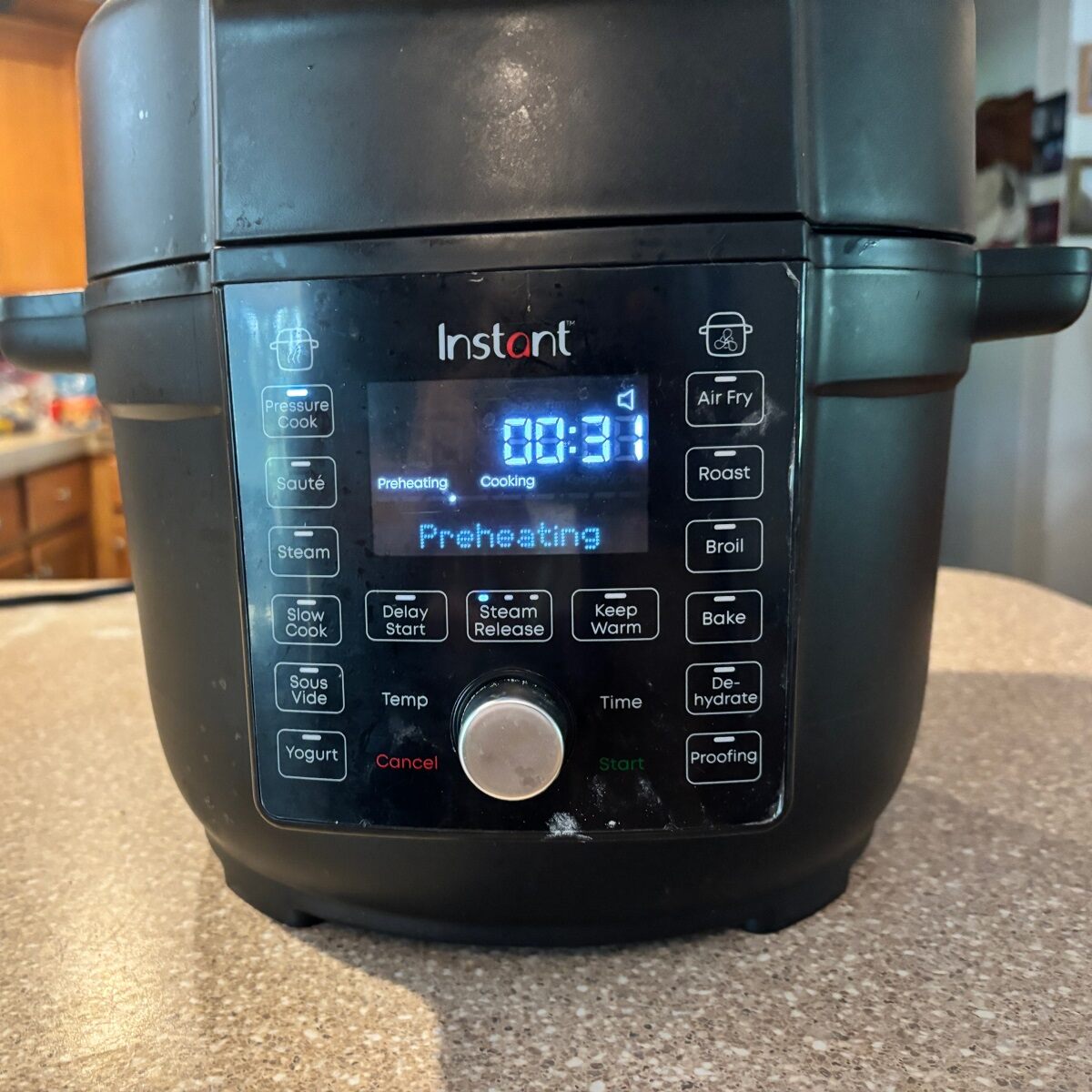
When you use your Instant Pot, do you ever wonder why there are three venting options and their differences? Don't worry, we have you covered. Today, we will briefly touch on each release setting and focus on the Instant Pot natural release option.
Knowing when and how to release pressure and steam in an Instant Pot is critical to producing great food. Instant Pots have a natural, quick, and use release, and which one you use depends on the type of food you are whipping up.
Jump to:
How A Pressure Cooker Works
Although the Instant Pot brand has only existed since 2010, the technology has existed since the 18th century. When you trap steam inside a pot, the pot increases in pressure. The pressure allows food to cook with at least 14 times the amount of pressure compared to ambient pressure.
This increase in pressure inside a small container also changes the boiling point of the water temperature to 250℉. The built-up pressure and the hotter temperatures cut cooking time by at least half that of a traditional oven.
A great example I often use is dried beans cooked in under 45 minutes rather than multiple hours in a crock pot.
Benefits Of An Instant Pot
The list of benefits is a lengthy one. Older electric pressure cookers had a bad reputation for causing steam burns to the ones using them. One of the best things about the Instant Pot models is that they are incredibly safe to use, with some models listing over 100 safety features.
Instant Pots are electric pressure cooker countertop appliances and use less electricity than an oven. They do not heat the kitchen during cooking, which is a major benefit when cooking in the hotter months of the year.
One-pot cooking is perhaps one of Instant Pot's best features. You can cook an entire meal with minimal cleanup, and it is also a great way to experiment with different cooking methods.
The recipes on Instant Pot's website walk the cook through the entire process one step at a time and include a timer, which is helpful to Instant Pot novices.
Also read: How To Get Smell Out Of Instant Pot Ring - 5 Easy Hacks
What Is Natural Release?

Natural release is when an Instant Pot decreases the cooking pressure gradually on its own. When the food is finished cooking, the steam release valve releases the steam slowly. Once done, the float valve drops, and you can open the lid. It takes anywhere from 5 to 40 minutes to release the pressure.
You want This setting when you prepare foods with longer cooking times, such as stews, soups, or broths. The gradual release of the steam is gentler on foods than the quick-release method.
Also read: Has My Instant Pot Cooker Died?
Natural vs. Quick-release
Since Instant Pot builds up pressure to pressure cook the food, it must be safely released. This release comes out as steam through a pressure release valve. The two most popular Steam release options are quick release and natural pressure release.
Natural Release Method
Once the cooking cycle is complete, the Instant Pot will switch to the "Keep Warm" mode if it's enabled. Natural Release (NR): You simply leave the Instant Pot alone and allow the pressure to drop naturally over time. This can take anywhere from a few minutes to around 20 minutes depending on the amount of food and the pressure build-up.
Natural release is often recommended for foods that benefit from additional cooking time, such as meats, stews, and soups, as it allows for further tenderization and melding of flavors.
It's also useful for avoiding the sputtering of liquids that can happen during quick release, which may be a concern with certain dishes.
Quick release method
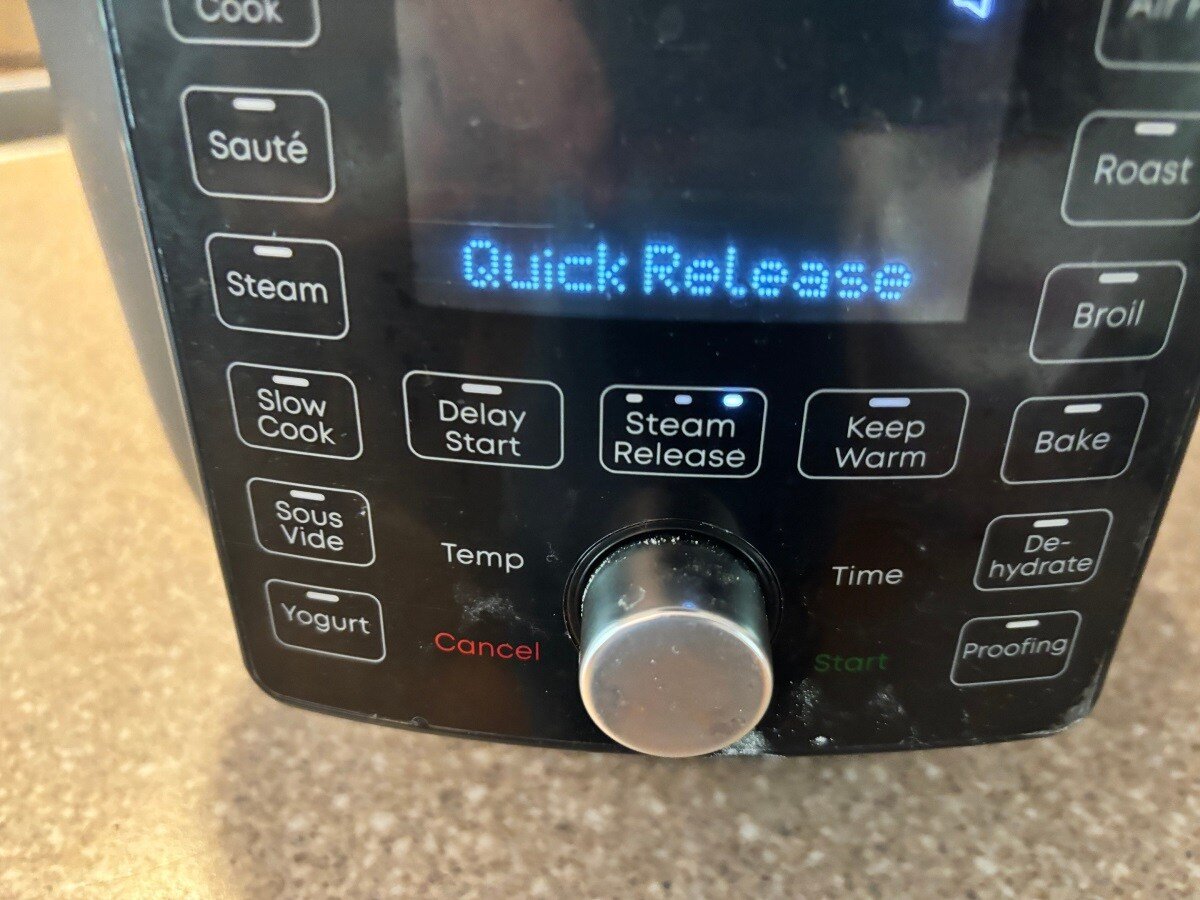
Quick release is just what the name implies: You manually release the steam simultaneously. This method is best for foods with exact cooking times, like fish or meat, as it prevents food from continuing to cook.
You can also opt for an abbreviated steam release. This involves allowing the Instant Pot to naturally release steam for a bit before using the quick-release method. This helps thicken up items with a high liquid content, like beans or soup.
See these recipes: 43 Best Instant Pot Soup Recipes of 2024
Pulse release
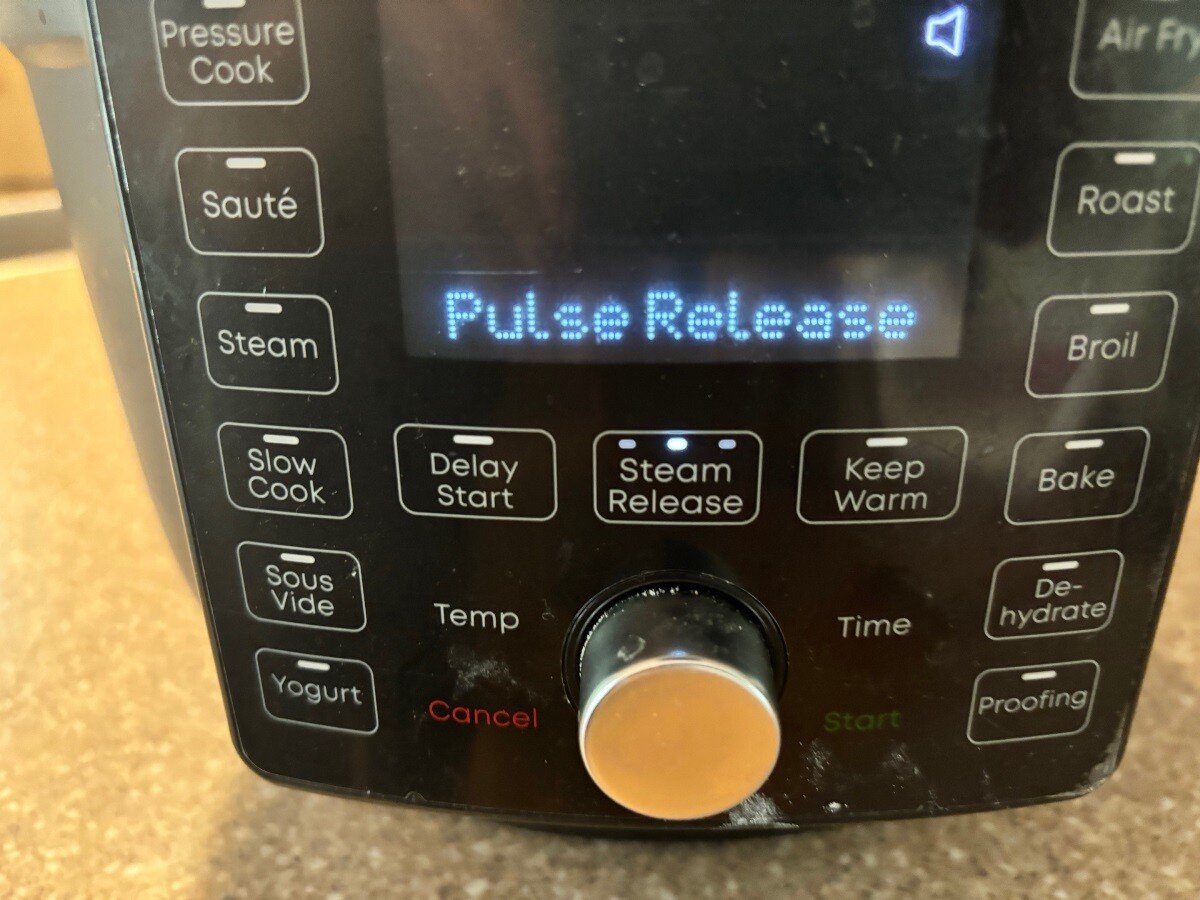
The pulse release option is only a few years old and expels steam in bursts during the cooking process, preventing the liquid from foaming out of the steam release button. This is ideal for starchy foods like pasta dishes.
Tips For Releasing Pressure
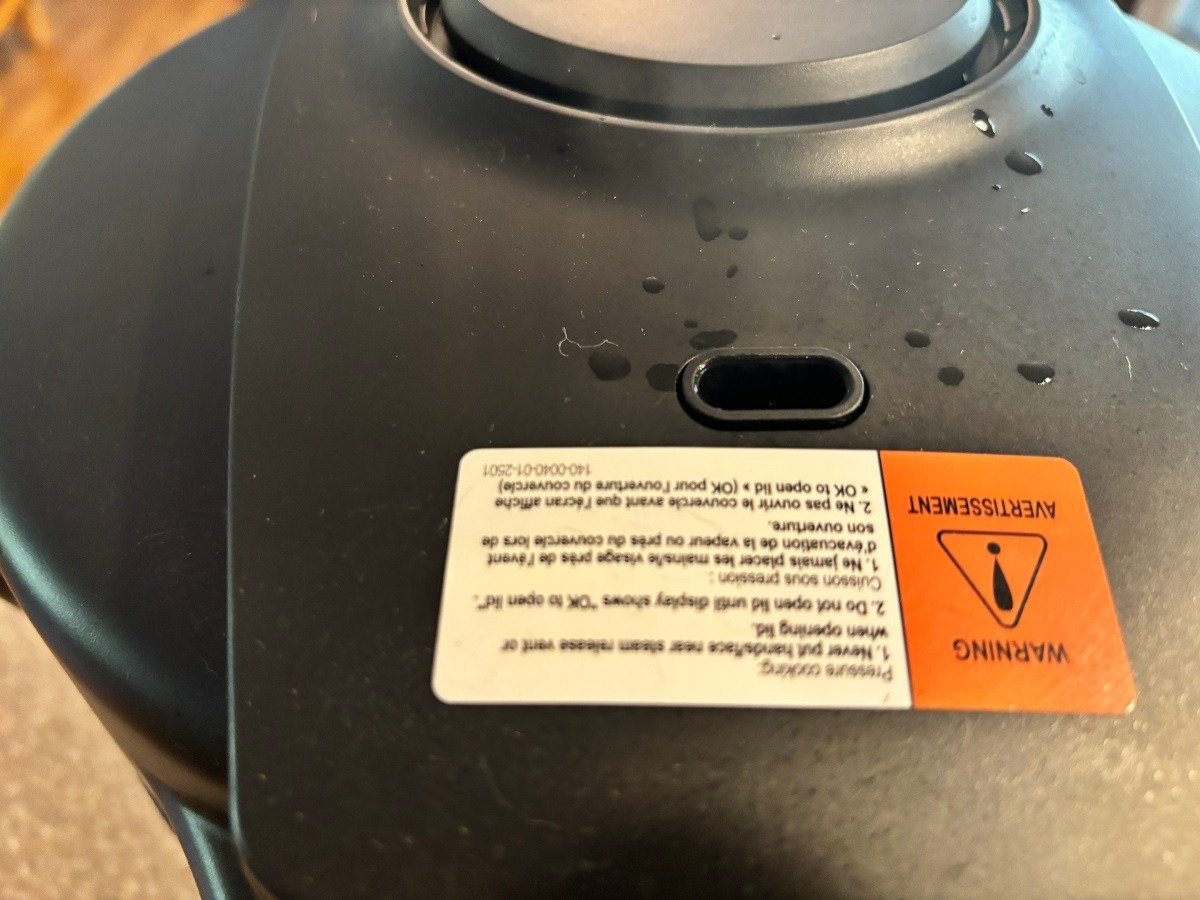
Most Instant Pot recipes, especially those from their website, include steam release information. When you seal the Instant Pot, you set the steam release valve to release steam in the desired way.
You can change the release method at any time during the cooking process. Older Instant Pot models have a pressure release valve, while newer models like my Instant Pot Max With Ultimate Lid have a digital interface.
This allows the user to use a combination of venting options. For instance, when I prepare dried beans, I let the Instant Pot naturally release for about ten minutes and then switch it over to quick release.
Also read: How To Bake In Instant Pot? Find Out In Our Comprehensive Guide
Safety Concerns

There can be a long period when pressure is building up. As the pressure builds, a small amount of steam will escape the release valve until it seals.
Stay clear of the steam, or you risk burning yourself. Also, a residual amount could be left inside the Instant Pot after the steam releases. Unlock and open the lid carefully while keeping your face away from the Instant Pot to avoid burning yourself.
The newer models, like the Instant Pot Duo With Ultimate Lid, have a slot for the steam to release instead of a pressure release valve. This is a safety feature and a welcome one, so you do not have to release the valve, which has the potential for minor steam burns.
I have never experienced any safety issues with an Instant Pot. I consider Instant Pots to be great learning tools for new cooks.
The fill line

Unless you are sauteing, the Instant Pot requires liquid to cook. The inside liner has two fill lines: maximum and minimum. If you fill the Instant Pot with too much liquid, it cannot build pressure. If you run out of liquid, an alarm will sound, and you must add more liquid.
When To Use Natural Release
You should use the Instant Pot natural release option for several types of food. Foods that require hydration, like beans or rice, benefit greatly from the natural release option. Here are several foods where the natural release process or using the abbreviated version of releasing steam mentioned above are best:
Foods that require natural release

- Foods that can splatter: Polenta or oatmeal
- Starchy foods: potatoes and other starches benefit from natural release because they will not dry out.
- Foods high in liquids: Soups, stews, and runny braises
I always use natural release when I cook braised meats like a pot roast. The slower release time helps the protein retain moisture and will not dry out.
Also read: Is Instant Pot Worth It? Find Out Why You Should Invest In One
Wrapping Up

Mastering the Instant Pot does not take too long, and knowing when to release steam naturally is a critical part of the learning curve. Most Instant Pot recipes will include the best steam release option, but you can also experiment with the three options to see which one you prefer.
Depending on your taste preferences, liquid foods like soups or oatmeal should always use the natural steam release option. Sometimes, I prefer quick release over natural release for a different texture.
One of the best things about using an Instant Pot is that they are forgiving. If you use the wrong steam release option, it will not cause a catastrophe.
Instant Pots are dependable and safe to use, with many models having over 100 safety features. The ease of use and the abundance of safety features make the Instant Pot brand one of the safest on the market!


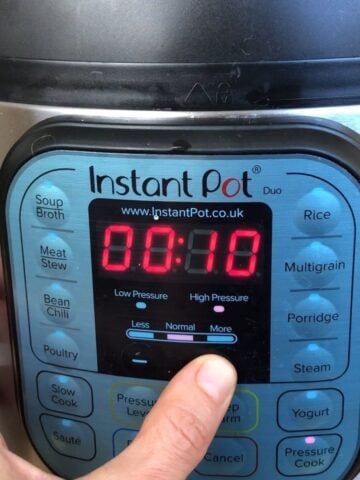




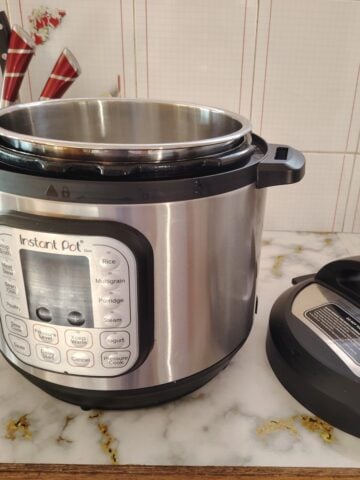


d06
I love using the natural release method with my Instant Pot! It really enhances the flavors and makes such a difference in my dishes. Thanks for sharing these tips; I can’t wait to try out some of the recipes you mentioned!